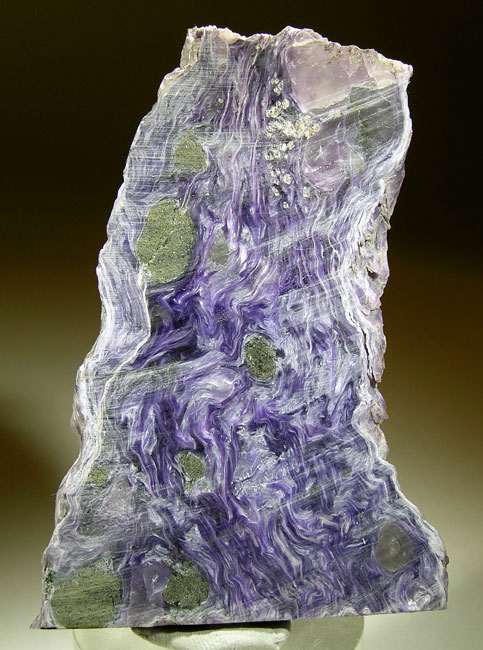Charoite
If you like purple, charoite is the mineral for you! Its name is pronounced like when something burnt is “charred” (or like the famous entertainer in the 1970s named Charo) instead of with a hard ‘C’ sound like “car” or “care.” Charoite comes from only one place: Russia. It was named after the Chara River in Siberia (a northern part of Russia), not far from where it was discovered. It’s a silicate mineral that’s always massive–it doesn’t form crystals–and can include small amounts of other minerals, such as feldspar and less well known minerals like augite, aegerine, and tinaksite. It’s a beautiful and intense shade of purple and often has swirly patterns in it, making it a great mineral for cutting and polishing and making jewelry out of it. When it’s cut and polished, it sometimes can have a cat’s eye effect too, which makes it even more valuable.
| Formula | Group or Type | Shape | Hardness | Specific Gravity | Streak | Luster |
|---|---|---|---|---|---|---|
| (K,Sr)15-16(Ca,Na)32[Si6O11(O,OH)6]2[Si12O18(O,OH)12]2[Si17O25(O,OH)18]2(OH,F)4 · ~3H2O | — | Monoclinic | 5–6 | 2.54–2.58 | White | Vitreous to pearly |
